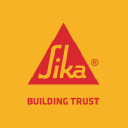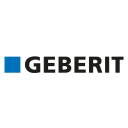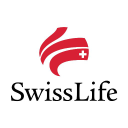SIKA.SW

Sika AG
SIKA.SW
(3.0)235,40 CHF
16.24% ROA
19.9% ROE
34.27x PER
42.048.758.827,00 CHF
98.65% DER
1.26% Yield
10.46% NPM
Sika AG Stock Analysis
Sika AG Fundamental Analysis
Fundamental analysis in stock investing is like studying the foundation of a house before buying it. It involves looking at a company's financial health, like its earnings, assets, and debts, to determine if it's a good investment based on its fundamental strength and potential for growth.
| # | Analysis | Rating |
|---|---|---|
| 1 |
ROE
ROE surpassing expectations (16.02%) highlights strong profitability and efficient use of shareholders' equity, making it an appealing investment prospect. |
|
| 2 |
Net Profit Growth
This company has consistently achieved strong net profit growth over the past five years, demonstrating a solid financial performance and making it an appealing investment option. |
|
| 3 |
Dividend Growth
Investors can take confidence in the company's impressive track record of annual dividend growth over the last five years, showcasing a commitment to rewarding shareholders. |
|
| 4 |
Dividend
Shareholders can rely on the company's remarkable dividend history, consistently paying dividends for the past five years, demonstrating a steadfast dedication to rewarding investors. |
|
| 5 |
ROA
The stock's ROA (7.58%) indicates that it's doing well in making money from the things it owns. This makes it a good option to invest and make consistent profits. |
|
| 6 |
Revenue Growth
Over the past three years, this company's revenue has consistently grown, demonstrating a positive financial trend that makes it an appealing choice. |
|
| 7 |
Assets Growth
Company's revenue has experienced consistent growth over the last three years, indicating a favorable financial trajectory and making it an attractive investment choice. |
|
| 8 |
Buffet Intrinsic Value
Warren Buffett's formula suggests that the company's stock is undervalued (2.444), making it an appealing investment prospect with its intrinsic value surpassing the current market price. |
|
| 9 |
PBV
The stock's elevated P/BV ratio (7.14x) raises concerns about its overvaluation, making it an imprudent choice for investors seeking value. |
|
| 10 |
DER
The company has a high debt to equity ratio (175%), which means it owes a lot of money compared to what it actually owns, making it financially risky. |
|
| 11 |
Graham Number
Based on the Graham number, this company's stock price appears to be higher than its intrinsic value, signaling a potentially unfavorable investment choice. |
Sika AG Technical Analysis
Technical analysis in stock investing is like reading the patterns on a weather map to predict future weather conditions. It involves studying past stock price movements and trading volumes to make predictions about where a stock's price might go next, without necessarily looking at the company's financial health.
| # | Analysis | Recommendation |
|---|---|---|
| 1 | Awesome Oscillator | Buy |
| 2 | MACD | Buy |
| 3 | RSI | Hold |
| 4 | Stoch RSI | Sell |
Sika AG Price Chart
Financial Statements
Financial statements are like report cards for companies. They show how much money a company makes (income statement), what it owns and owes (balance sheet), and where it spends its money (cash flow statement), helping stock investors understand if a company is healthy and worth investing in.
Income Statements
An income statement for a company is like a scoreboard for its profits and losses. It shows how much money the company made (revenue) and how much it spent to make that money (expenses), helping stock investors see if a company is making a profit or not.
Revenue in stock investing is the total amount of money a company earns from its sales, and it's a key factor that investors consider to assess a company's financial performance and growth potential.
| Year | Revenue | Growth |
|---|---|---|
| 2002 | 2.121.700.000 | |
| 2003 | 2.268.200.000 | 6.46% |
| 2004 | 2.559.800.000 | 11.39% |
| 2005 | 2.924.400.000 | 12.47% |
| 2006 | 3.904.000.000 | 25.09% |
| 2007 | 4.579.800.000 | 14.76% |
| 2008 | 4.632.400.000 | 1.14% |
| 2009 | 4.162.300.000 | -11.29% |
| 2010 | 4.421.800.000 | 5.87% |
| 2011 | 4.563.700.000 | 3.11% |
| 2012 | 4.828.900.000 | 5.49% |
| 2013 | 5.142.200.000 | 6.09% |
| 2014 | 5.571.300.000 | 7.7% |
| 2015 | 5.489.200.000 | -1.5% |
| 2016 | 5.747.700.000 | 4.5% |
| 2017 | 6.248.300.000 | 8.01% |
| 2018 | 7.085.400.000 | 11.81% |
| 2019 | 8.109.200.000 | 12.63% |
| 2020 | 7.877.500.000 | -2.94% |
| 2021 | 9.252.300.000 | 14.86% |
| 2022 | 10.491.800.000 | 11.81% |
| 2023 | 11.238.600.000 | 6.64% |
| 2024 | 23.339.200.000 | 51.85% |
Research and Development Expenses are the costs a company incurs to create and improve its products or services, which can be important for investors to evaluate a company's innovation and potential for future growth.
| Year | Research and Development Expenses | Growth |
|---|---|---|
| 2002 | 0 | |
| 2003 | 0 | 0% |
| 2004 | 0 | 0% |
| 2005 | 0 | 0% |
| 2006 | 0 | 0% |
| 2007 | 0 | 0% |
| 2008 | 0 | 0% |
| 2009 | 0 | 0% |
| 2010 | 0 | 0% |
| 2011 | 0 | 0% |
| 2012 | 0 | 0% |
| 2013 | 166.100.000 | 100% |
| 2014 | 162.200.000 | -2.4% |
| 2015 | 160.600.000 | -1% |
| 2016 | 172.100.000 | 6.68% |
| 2017 | 184.600.000 | 6.77% |
| 2018 | 189.500.000 | 2.59% |
| 2019 | 200.200.000 | 5.34% |
| 2020 | 193.600.000 | -3.41% |
| 2021 | 214.300.000 | 9.66% |
| 2022 | 232.000.000 | 7.63% |
| 2023 | 270.500.000 | 14.23% |
| 2024 | 0 | 0% |
General and Administrative Expenses are the costs a company incurs to run its day-to-day operations, such as office rent, salaries, and utilities, which investors consider to understand a company's overall efficiency and management effectiveness.
| Year | General and Administrative Expenses | Growth |
|---|---|---|
| 2002 | 565.700.000 | |
| 2003 | 590.100.000 | 4.13% |
| 2004 | 0 | 0% |
| 2005 | 587.200.000 | 100% |
| 2006 | 0 | 0% |
| 2007 | 0 | 0% |
| 2008 | 0 | 0% |
| 2009 | 0 | 0% |
| 2010 | 0 | 0% |
| 2011 | 0 | 0% |
| 2012 | 0 | 0% |
| 2013 | 0 | 0% |
| 2014 | 0 | 0% |
| 2015 | 0 | 0% |
| 2016 | 0 | 0% |
| 2017 | 0 | 0% |
| 2018 | 239.600.000 | 100% |
| 2019 | 318.700.000 | 24.82% |
| 2020 | 278.200.000 | -14.56% |
| 2021 | 239.400.000 | -16.21% |
| 2022 | 183.700.000 | -30.32% |
| 2023 | 463.200.000 | 60.34% |
| 2024 | 0 | 0% |
EBITDA stands for Earnings Before Interest, Taxes, Depreciation, and Amortization. It is a measure that helps stock investors analyze a company's profitability by looking at its earnings without considering certain expenses. This helps to get a clearer picture of the company's financial performance and its ability to generate cash flow.
| Year | EBITDA | Growth |
|---|---|---|
| 2002 | 264.100.000 | |
| 2003 | 267.900.000 | 1.42% |
| 2004 | 338.500.000 | 20.86% |
| 2005 | 367.400.000 | 7.87% |
| 2006 | 509.700.000 | 27.92% |
| 2007 | 639.700.000 | 20.32% |
| 2008 | 539.200.000 | -18.64% |
| 2009 | 561.800.000 | 4.02% |
| 2010 | 577.000.000 | 2.63% |
| 2011 | 480.600.000 | -20.06% |
| 2012 | 563.700.000 | 14.74% |
| 2013 | 663.500.000 | 15.04% |
| 2014 | 785.400.000 | 15.52% |
| 2015 | 827.400.000 | 5.08% |
| 2016 | 952.400.000 | 13.12% |
| 2017 | 1.063.200.000 | 10.42% |
| 2018 | 1.168.100.000 | 8.98% |
| 2019 | 1.333.200.000 | 12.38% |
| 2020 | 1.495.600.000 | 10.86% |
| 2021 | 1.758.800.000 | 14.96% |
| 2022 | 1.959.000.000 | 10.22% |
| 2023 | 2.122.900.000 | 7.72% |
| 2024 | 4.419.200.000 | 51.96% |
Gross profit is the money a company makes from selling its products or services after subtracting the cost of producing or providing them, and it is an important measure for investors to understand a company's profitability.
| Year | Gross Profit | Growth |
|---|---|---|
| 2002 | 1.285.100.000 | |
| 2003 | 1.363.900.000 | 5.78% |
| 2004 | 1.500.900.000 | 9.13% |
| 2005 | 1.625.800.000 | 7.68% |
| 2006 | 2.101.100.000 | 22.62% |
| 2007 | 2.436.000.000 | 13.75% |
| 2008 | 2.390.800.000 | -1.89% |
| 2009 | 2.295.300.000 | -4.16% |
| 2010 | 2.384.900.000 | 3.76% |
| 2011 | 2.304.600.000 | -3.48% |
| 2012 | 2.519.300.000 | 8.52% |
| 2013 | 2.695.600.000 | 6.54% |
| 2014 | 2.951.300.000 | 8.66% |
| 2015 | 2.970.800.000 | 0.66% |
| 2016 | 3.181.100.000 | 6.61% |
| 2017 | 3.399.100.000 | 6.41% |
| 2018 | 3.751.700.000 | 9.4% |
| 2019 | 4.344.000.000 | 13.63% |
| 2020 | 2.421.800.000 | -79.37% |
| 2021 | 2.789.400.000 | 13.18% |
| 2022 | 3.084.800.000 | 9.58% |
| 2023 | 3.532.700.000 | 12.68% |
| 2024 | 12.870.400.000 | 72.55% |
Net income in stock investing is like the money a company actually gets to keep as profit after paying all its bills, and it's an important measure to understand how well a company is doing financially.
| Year | Net Profit | Growth |
|---|---|---|
| 2002 | 78.800.000 | |
| 2003 | 92.900.000 | 15.18% |
| 2004 | 120.500.000 | 22.9% |
| 2005 | 154.900.000 | 22.21% |
| 2006 | 231.900.000 | 33.2% |
| 2007 | 345.700.000 | 32.92% |
| 2008 | 266.700.000 | -29.62% |
| 2009 | 225.900.000 | -18.06% |
| 2010 | 310.800.000 | 27.32% |
| 2011 | 213.300.000 | -45.71% |
| 2012 | 279.500.000 | 23.69% |
| 2013 | 342.200.000 | 18.32% |
| 2014 | 439.000.000 | 22.05% |
| 2015 | 460.300.000 | 4.63% |
| 2016 | 563.100.000 | 18.26% |
| 2017 | 643.500.000 | 12.49% |
| 2018 | 682.900.000 | 5.77% |
| 2019 | 751.900.000 | 9.18% |
| 2020 | 824.500.000 | 8.81% |
| 2021 | 1.047.900.000 | 21.32% |
| 2022 | 1.162.500.000 | 9.86% |
| 2023 | 1.062.000.000 | -9.46% |
| 2024 | 2.303.600.000 | 53.9% |
EPS, or earnings per share, is a measure that shows how much profit a company has earned for each outstanding share of its stock, and it is important for stock investors as it helps understand the profitability of a company and compare it with other companies in the market.
| Year | Earning per Share (EPS) | Growth |
|---|---|---|
| 2002 | 1 | |
| 2003 | 1 | 0% |
| 2004 | 1 | 0% |
| 2005 | 1 | 100% |
| 2006 | 2 | 0% |
| 2007 | 2 | 50% |
| 2008 | 2 | -100% |
| 2009 | 2 | 0% |
| 2010 | 2 | 50% |
| 2011 | 1 | -100% |
| 2012 | 2 | 0% |
| 2013 | 2 | 50% |
| 2014 | 3 | 0% |
| 2015 | 3 | 33.33% |
| 2016 | 4 | 0% |
| 2017 | 4 | 25% |
| 2018 | 5 | 0% |
| 2019 | 5 | 20% |
| 2020 | 6 | 0% |
| 2021 | 7 | 16.67% |
| 2022 | 8 | 14.29% |
| 2023 | 7 | -16.67% |
| 2024 | 14 | 57.14% |
Cashflow Statements
Cashflow statements show the movement of money in and out of a company, helping stock investors understand how much money a company makes and spends. By examining cashflow statements, investors can assess if a company is generating enough cash to pay its bills, invest in growth, and provide returns to stockholders.
Free cash flow is the leftover cash that a company generates after covering its operating expenses and capital expenditures, which is important for stock investors as it shows how much money a company has available to invest in growth, pay dividends, or reduce debt.
| Year | Free Cashflow | Growth |
|---|---|---|
| 2002 | 110.300.000 | |
| 2003 | 77.200.000 | -42.88% |
| 2004 | 142.600.000 | 45.86% |
| 2005 | 116.700.000 | -22.19% |
| 2006 | 176.400.000 | 33.84% |
| 2007 | 176.900.000 | 0.28% |
| 2008 | 146.500.000 | -20.75% |
| 2009 | 365.100.000 | 59.87% |
| 2010 | 324.900.000 | -12.37% |
| 2011 | 182.200.000 | -78.32% |
| 2012 | 296.000.000 | 38.45% |
| 2013 | 430.400.000 | 31.23% |
| 2014 | 408.900.000 | -5.26% |
| 2015 | 450.200.000 | 9.17% |
| 2016 | 586.200.000 | 23.2% |
| 2017 | 493.400.000 | -18.81% |
| 2018 | 510.600.000 | 3.37% |
| 2019 | 1.034.200.000 | 50.63% |
| 2020 | 1.241.700.001 | 16.71% |
| 2021 | 893.499.999 | -38.97% |
| 2022 | 833.800.000 | -7.16% |
| 2023 | 1.365.500.000 | 38.94% |
| 2024 | 406.600.000 | -235.83% |
Operating cash flow represents the cash generated or consumed by a company's day-to-day operations, excluding external investing or financing activities, and is crucial for stock investors as it shows how much cash a company is generating from its core business operations.
| Year | Operating Cashflow | Growth |
|---|---|---|
| 2002 | 206.900.000 | |
| 2003 | 175.900.000 | -17.62% |
| 2004 | 248.500.000 | 29.22% |
| 2005 | 231.000.000 | -7.58% |
| 2006 | 316.400.000 | 26.99% |
| 2007 | 362.700.000 | 12.77% |
| 2008 | 376.800.000 | 3.74% |
| 2009 | 526.300.000 | 28.41% |
| 2010 | 424.800.000 | -23.89% |
| 2011 | 299.300.000 | -41.93% |
| 2012 | 427.300.000 | 29.96% |
| 2013 | 574.000.000 | 25.56% |
| 2014 | 554.400.000 | -3.54% |
| 2015 | 585.800.000 | 5.36% |
| 2016 | 735.700.000 | 20.38% |
| 2017 | 651.900.000 | -12.85% |
| 2018 | 744.000.000 | 12.38% |
| 2019 | 1.213.900.000 | 38.71% |
| 2020 | 1.373.400.000 | 11.61% |
| 2021 | 1.064.099.999 | -29.07% |
| 2022 | 1.099.800.000 | 3.25% |
| 2023 | 1.645.400.000 | 33.16% |
| 2024 | 554.500.000 | -196.74% |
Capex, short for capital expenditures, refers to the money a company spends on acquiring or upgrading tangible assets like buildings, equipment, or technology, which is important for stock investors as it indicates how much a company is investing in its infrastructure to support future growth and profitability.
| Year | Capital Expenditure | Growth |
|---|---|---|
| 2002 | 96.600.000 | |
| 2003 | 98.700.000 | 2.13% |
| 2004 | 105.900.000 | 6.8% |
| 2005 | 114.300.000 | 7.35% |
| 2006 | 140.000.000 | 18.36% |
| 2007 | 185.800.000 | 24.65% |
| 2008 | 230.300.000 | 19.32% |
| 2009 | 161.200.000 | -42.87% |
| 2010 | 99.900.000 | -61.36% |
| 2011 | 117.100.000 | 14.69% |
| 2012 | 131.300.000 | 10.81% |
| 2013 | 143.600.000 | 8.57% |
| 2014 | 145.500.000 | 1.31% |
| 2015 | 135.600.000 | -7.3% |
| 2016 | 149.500.000 | 9.3% |
| 2017 | 158.500.000 | 5.68% |
| 2018 | 233.400.000 | 32.09% |
| 2019 | 179.700.000 | -29.88% |
| 2020 | 131.699.999 | -36.45% |
| 2021 | 170.600.000 | 22.8% |
| 2022 | 266.000.000 | 35.86% |
| 2023 | 279.900.000 | 4.97% |
| 2024 | 147.900.000 | -89.25% |
Balance Sheet
Balance sheets provide a snapshot of a company's financial health and its assets (such as cash, inventory, and property) and liabilities (like debts and obligations) at a specific point in time. For stock investors, balance sheets help assess the company's overall worth and evaluate its ability to meet financial obligations and support future growth.
Equity refers to the ownership interest or stake that shareholders have in a company, representing their claim on its assets and earnings after all debts and liabilities are paid.
| Year | Equity | Growth |
|---|---|---|
| 2002 | 793.800.000 | |
| 2003 | 847.500.000 | 6.34% |
| 2004 | 942.200.000 | 10.05% |
| 2005 | 1.096.000.000 | 14.03% |
| 2006 | 1.274.000.000 | 13.97% |
| 2007 | 1.471.500.000 | 13.42% |
| 2008 | 1.464.700.000 | -0.46% |
| 2009 | 1.593.000.000 | 8.05% |
| 2010 | 1.752.200.000 | 9.09% |
| 2011 | 1.839.100.000 | 4.73% |
| 2012 | 2.007.400.000 | 8.38% |
| 2013 | 2.136.200.000 | 6.03% |
| 2014 | 2.383.300.000 | 10.37% |
| 2015 | 2.552.099.999 | 6.61% |
| 2016 | 2.947.699.999 | 13.42% |
| 2017 | 3.411.100.000 | 13.59% |
| 2018 | 1.675.200.000 | -103.62% |
| 2019 | 3.161.200.000 | 47.01% |
| 2020 | 3.288.000.000 | 3.86% |
| 2021 | 4.395.900.000 | 25.2% |
| 2022 | 4.967.100.000 | 11.5% |
| 2023 | 4.728.600.000 | -5.04% |
| 2023 | 5.933.200.000 | 20.3% |
| 2024 | 6.425.200.000 | 7.66% |
Assets represent the valuable resources that a company owns, such as cash, inventory, property, and equipment, and understanding a company's assets helps investors assess its value and potential for generating future profits.
| Year | Assets | Growth |
|---|---|---|
| 2002 | 1.733.600.000 | |
| 2003 | 1.725.700.000 | -0.46% |
| 2004 | 1.693.600.000 | -1.9% |
| 2005 | 2.602.600.000 | 34.93% |
| 2006 | 3.063.600.000 | 15.05% |
| 2007 | 3.311.300.000 | 7.48% |
| 2008 | 3.209.400.000 | -3.18% |
| 2009 | 3.629.400.000 | 11.57% |
| 2010 | 3.931.700.000 | 7.69% |
| 2011 | 3.830.400.000 | -2.64% |
| 2012 | 4.262.300.000 | 10.13% |
| 2013 | 4.735.900.000 | 10% |
| 2014 | 4.817.900.000 | 1.7% |
| 2015 | 4.923.800.000 | 2.15% |
| 2016 | 5.099.200.000 | 3.44% |
| 2017 | 5.795.800.000 | 12.02% |
| 2018 | 6.382.000.000 | 9.19% |
| 2019 | 9.959.700.000 | 35.92% |
| 2020 | 9.939.900.000 | -0.2% |
| 2021 | 10.896.200.000 | 8.78% |
| 2022 | 11.483.200.000 | 5.11% |
| 2023 | 16.413.900.000 | 30.04% |
| 2023 | 15.272.300.000 | -7.47% |
| 2024 | 16.134.400.000 | 5.34% |
Liabilities refer to the financial obligations or debts that a company owes to creditors or external parties, and understanding a company's liabilities is important for investors as it helps assess the company's financial risk and ability to meet its obligations.
| Year | Liabilities | Growth |
|---|---|---|
| 2002 | 939.300.000 | |
| 2003 | 869.600.000 | -8.02% |
| 2004 | 751.400.000 | -15.73% |
| 2005 | 1.506.600.000 | 50.13% |
| 2006 | 1.789.600.000 | 15.81% |
| 2007 | 1.839.800.000 | 2.73% |
| 2008 | 1.744.700.000 | -5.45% |
| 2009 | 2.036.400.000 | 14.32% |
| 2010 | 2.179.500.000 | 6.57% |
| 2011 | 1.991.300.000 | -9.45% |
| 2012 | 2.254.900.000 | 11.69% |
| 2013 | 2.599.700.000 | 13.26% |
| 2014 | 2.434.600.000 | -6.78% |
| 2015 | 2.371.700.000 | -2.65% |
| 2016 | 2.151.500.000 | -10.23% |
| 2017 | 2.384.700.000 | 9.78% |
| 2018 | 4.706.800.000 | 49.34% |
| 2019 | 6.798.500.000 | 30.77% |
| 2020 | 6.651.900.000 | -2.2% |
| 2021 | 6.500.300.000 | -2.33% |
| 2022 | 6.516.100.000 | 0.24% |
| 2023 | 11.685.300.000 | 44.24% |
| 2023 | 9.339.100.000 | -25.12% |
| 2024 | 9.709.200.000 | 3.81% |
Sika AG Financial Ratio (TTM)
Valuation Metrics
- Revenue per Share
- 73.11
- Net Income per Share
- 7.65
- Price to Earning Ratio
- 34.27x
- Price To Sales Ratio
- 3.59x
- POCF Ratio
- 23.81
- PFCF Ratio
- 28.81
- Price to Book Ratio
- 6.56
- EV to Sales
- 4.07
- EV Over EBITDA
- 21.14
- EV to Operating CashFlow
- 27.02
- EV to FreeCashFlow
- 32.7
- Earnings Yield
- 0.03
- FreeCashFlow Yield
- 0.03
- Market Cap
- 42,05 Bil.
- Enterprise Value
- 47,73 Bil.
- Graham Number
- 82.93
- Graham NetNet
- -40.96
Income Statement Metrics
- Net Income per Share
- 7.65
- Income Quality
- 1.44
- ROE
- 0.2
- Return On Assets
- 0.08
- Return On Capital Employed
- 0.13
- Net Income per EBT
- 0.81
- EBT Per Ebit
- 0.88
- Ebit per Revenue
- 0.15
- Effective Tax Rate
- 0.19
Margins
- Sales, General, & Administrative to Revenue
- 0
- Research & Developement to Revenue
- 0.02
- Stock Based Compensation to Revenue
- 0
- Gross Profit Margin
- 0.44
- Operating Profit Margin
- 0.15
- Pretax Profit Margin
- 0.13
- Net Profit Margin
- 0.1
Dividends
- Dividend Yield
- 0.01
- Dividend Yield %
- 1.26
- Payout Ratio
- 0.22
- Dividend Per Share
- 3.3
Operating Metrics
- Operating Cashflow per Share
- 11.01
- Free CashFlow per Share
- 9.1
- Capex to Operating CashFlow
- 0.17
- Capex to Revenue
- 0.03
- Capex to Depreciation
- 0.57
- Return on Invested Capital
- 0.11
- Return on Tangible Assets
- 0.16
- Days Sales Outstanding
- 74.74
- Days Payables Outstanding
- 66.73
- Days of Inventory on Hand
- 76.01
- Receivables Turnover
- 4.88
- Payables Turnover
- 5.47
- Inventory Turnover
- 4.8
- Capex per Share
- 1.91
Balance Sheet
- Cash per Share
- 4,04
- Book Value per Share
- 40,05
- Tangible Book Value per Share
- -13.43
- Shareholders Equity per Share
- 39.97
- Interest Debt per Share
- 40.26
- Debt to Equity
- 0.99
- Debt to Assets
- 0.39
- Net Debt to EBITDA
- 2.52
- Current Ratio
- 1.43
- Tangible Asset Value
- -2,15 Bil.
- Net Current Asset Value
- -4,94 Bil.
- Invested Capital
- 12403800000
- Working Capital
- 1,43 Bil.
- Intangibles to Total Assets
- 0.53
- Average Receivables
- 2,21 Bil.
- Average Payables
- 1,16 Bil.
- Average Inventory
- 1310150000
- Debt to Market Cap
- 0.15
Dividends
Dividends in stock investing are like rewards that companies give to their shareholders. They are a portion of the company's profits distributed to investors, typically in the form of cash payments, as a way for them to share in the company's success.
| Year | Dividends | Growth |
|---|---|---|
| 2007 | 31 | |
| 2008 | 45 | 31.11% |
| 2009 | 45 | 0% |
| 2010 | 45 | 0% |
| 2011 | 45 | 0% |
| 2012 | 21 | -114.29% |
| 2013 | 51 | 58.82% |
| 2014 | 57 | 10.53% |
| 2015 | 72 | 20.83% |
| 2016 | 78 | 7.69% |
| 2017 | 96 | 18.75% |
| 2018 | 111 | 13.51% |
| 2019 | 2 | -5450% |
| 2020 | 2 | 0% |
| 2021 | 3 | 0% |
| 2022 | 3 | 0% |
| 2023 | 3 | 33.33% |
| 2024 | 3 | 0% |
Sika AG Profile
About Sika AG
Sika AG, a specialty chemicals company, develops, produces, and sells systems and products for bonding, sealing, damping, reinforcing, and protecting in the building sector and automotive industry worldwide. It offers tile adhesives and grouts, and systems for under-tile waterproofing and sound reduction, as well as renders and decorative finishes for exterior and interior walls; and develops and markets various admixtures and additives for use in concrete, cement, and mortar production, as well as flat roofing systems. The company also provides a range of technologies used for below and aboveground waterproofing, including flexible membrane systems, liquid applied membranes, joint waterproofing systems, waterproofing mortars and mortar admixtures, and injection resins and grouts for use in various markets, such as commercial and residential basements, tunnels, bridges, and various types of water-retaining structures, such as reservoirs, storage basins, and storage tanks. Further, it offers flooring solutions, such as synthetic resin and cementitious systems for industrial and commercial buildings; and sealants, tapes, spray foams, and elastic adhesives for the building envelope, interior finishing, and infrastructure construction applications. In addition, the company provides repair, strengthening, and protective solutions for concrete structures, such as repair mortars, shrinking grouts, anchoring adhesives, protective coatings, and corrosion control and structural strengthening systems. It serves automobile and commercial vehicle assembly, automotive aftermarket, marine vessel, industrial lamination, renewable energy, and facade engineering industries. The company was founded in 1910 and is headquartered in Baar, Switzerland.
- CEO
- Mr. Thomas Hasler M.B.A., Exe
- Employee
- 33.998
- Address
-
Zugerstrasse 50
Baar, 6340
Sika AG Executives & BODs
| # | Name | Age |
|---|---|---|
| 1 |
Mr. Marcos Vazquez Head of Global Procurement |
70 |
| 2 |
Mr. Stefan Mosli HSG, lic. iur., M. C. L, RA Senior Counsel & Secretary of the Board |
70 |
| 3 |
Ms. Christine Kukan Head Investor Relations |
70 |
| 4 |
Mr. Philippe Jost Regional Manager of Asia/Pacific |
70 |
| 5 |
Ms. Patricia Heidtman Chief Innovation & Sustainability Officer |
70 |
| 6 |
Mr. Ivo Schädler M.B.A., M.Sc. Head of Construction |
70 |
| 7 |
Mr. Dominik Slappnig Head of Corporate Communications & Investor Relations |
70 |
| 8 |
Ms. Raffaella Marzi Head of Human Resources, Legal & Compliance |
70 |
| 9 |
Mr. Thomas Hasler M.B.A., Executive MBA Chief Executive Officer |
70 |
| 10 |
Mr. Adrian Widmer Chief Financial Officer |
70 |




